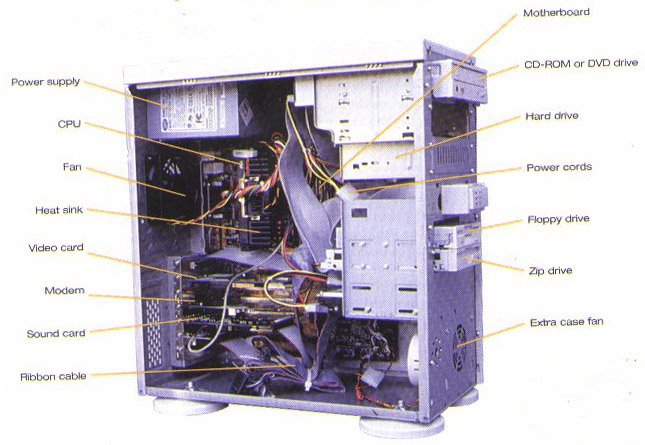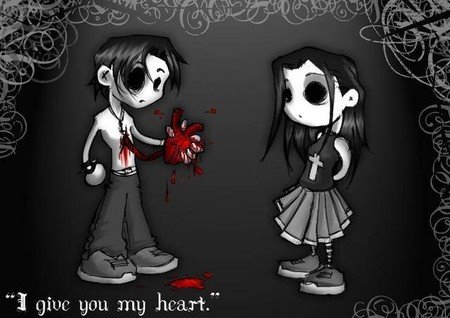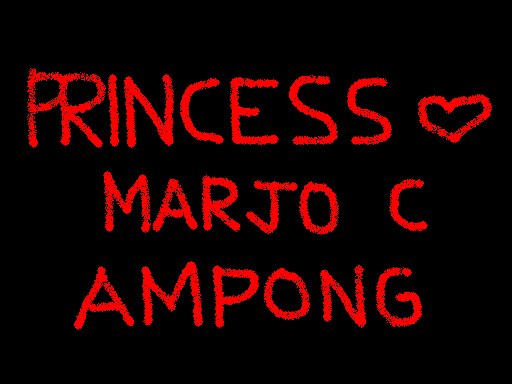Another term for display screen. The term monitor, however, usually refers to the entire box, whereas display screen can mean just the screen. In addition, the term monitor often implies graphics< capabilities.
key board
The standard layout of letters, numbers, and punctuation is known as a QWERTY keyboard because the first six keys on the top row of letters spell QWERTY. The QWERTY keyboard was designed in the 1800s for mechanical typewriters and was actually designed to slow typists down to avoid jamming the keys. Another keyboard design, which has letters positioned for speed typing, is the Dvorak keyboard.
Computer keyboards are similar to electric-typewriter keyboards but contain additional keys.
Mouse
A device that controls the movement of the cursor or pointer on a display screen. A mouse is a small object you can roll along a hard, flat surface. Its name is derived from its shape, which looks a bit like a mouse, its connecting wire that one can imagine to be the mouse's tail, and the fact that one must make it scurry along a surface. As you move the mouse, the pointer on the display screen moves in the same direction. Mice contain at least one button and sometimes as many as three, which have different functions depending on what program is running. Some newer mice also include a scroll wheel for scrolling through long documents.
CPU
Abbreviation of central processing unit, and pronounced as separate letters. The CPU is the brains of the computer. Sometimes referred to simply as the processor or central processor, the CPU is where most calculations take place. In terms of computing power, the CPU is the most important element of a computer system.
Printer
A device that prints text or illustrations on paper. There are many different types of printers. In terms of the technology utilized, printers fall into the following categories:
daisy-wheel: Similar to a ball-head typewriter, this type of printer has a plastic or metal wheel on which the shape of each character stands out in relief. A hammer presses the wheel against a ribbon, which in turn makes an ink stain in the shape of the character on the paper.Daisy-wheel printers produce letter-quality print but cannot print graphics.
dot-matrix: Creates characters by striking pins against an ink ribbon. Each pin makes a dot, and combinations of dots form characters and illustrations.
ink-jet: Sprays ink at a sheet of paper. Ink-jet printers produce high-quality text and graphics.
laser: Uses the same technology as copy machines. Laser printers produce very high quality text and graphics.
LCD & LED : Similar to a laser printer, but uses liquid crystals or light-emitting diodes rather than a laser to produce an image on the drum.
line printer: Contains a chain of characters or pins that print an entire line at one time. Line printers are very fast, but produce low-quality print.
thermal printer: An inexpensive printer that works by pushing heated pins against heat-sensitive paper. Thermal printers are widely used in calculators and fax machines.
Speaker
The PC speaker is the most primitive sound system used in IBM compatible PCs, and in fact used to be the only one in use in PC games before more technologically advanced sound cards such as AdLib or the Sound Blaster were introduced as ISA plug-in cards around 1990. However, even some years after these sound cards became mainstream and widely used, game manufacturers continued to support PC-speaker-only sound/music in their games in order to maximise their customer base. ...
Microphone
A microphone, sometimes referred to as a mike or mic (both IPA pronunciation: [maik]), is an acoustic to electric transducer or sensor that converts sound into an electrical signal.









No comments:
Post a Comment